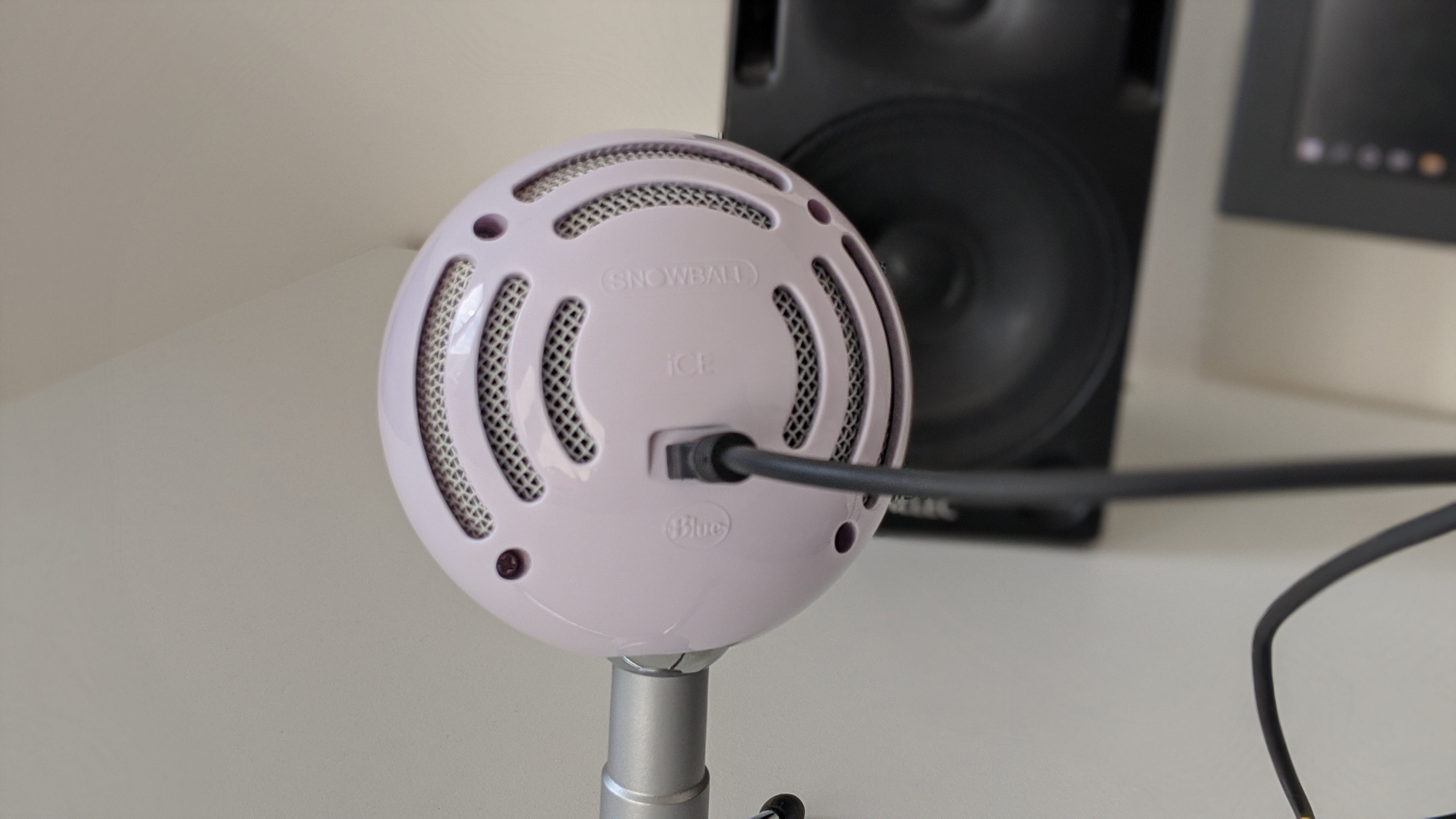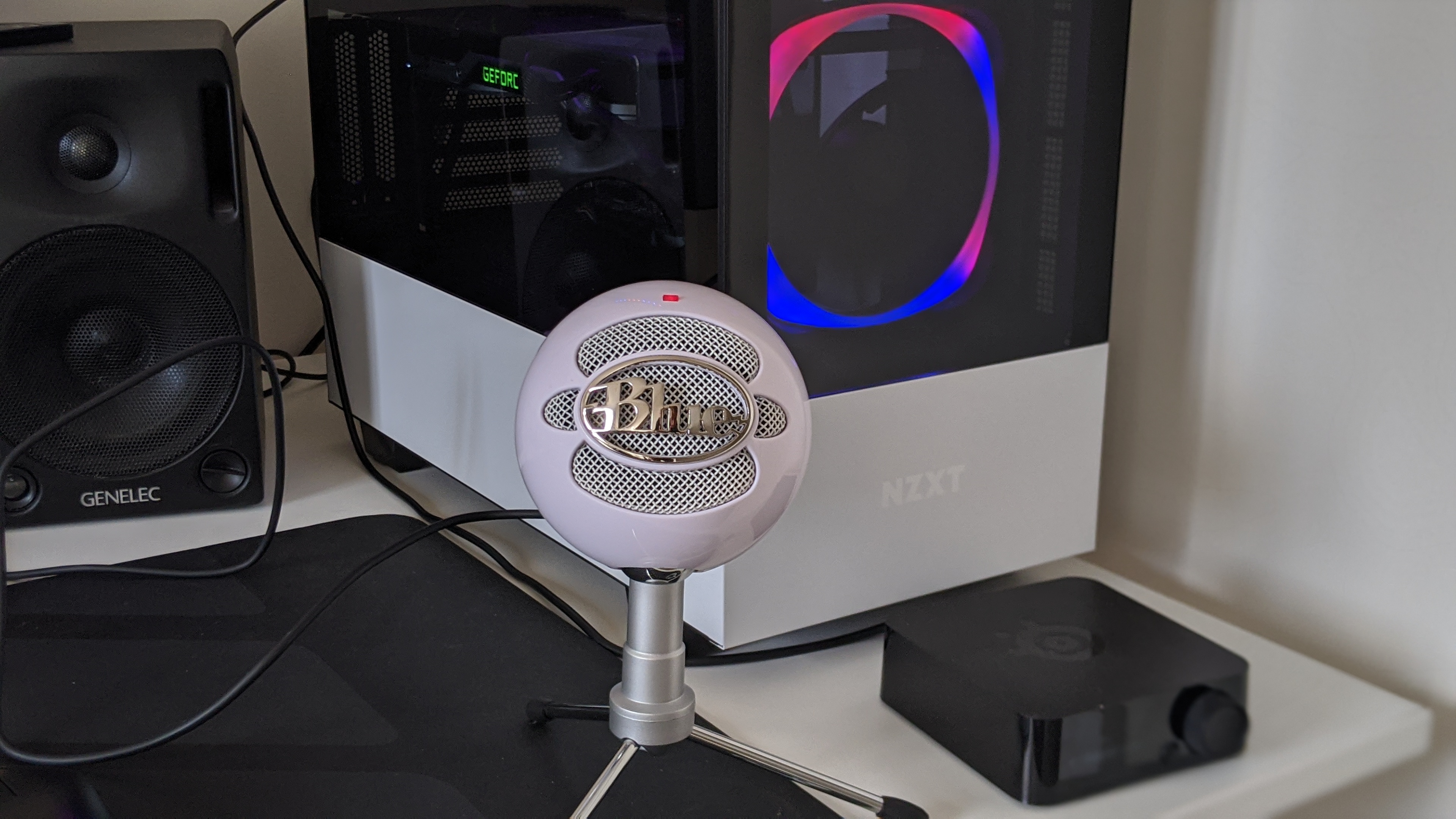Tom's Hardware Verdict
The Blue Snowball iCE is an excellent way to get into vocal recording or streaming, if you can get used to its quirks.
Pros
- +
Solid metal stand
- +
Small enough to toss in a backpack
- +
Mid-century looks
- +
Great sound is possible, with tweaking
Cons
- -
Just one polar pattern
- -
Doesn’t handle distance or extreme closeups well
- -
Feature-rich Snowball only marginally pricier
Why you can trust Tom's Hardware
Blue’s family of USB microphones has shaken up the streamer gear market like no other brand, finding their way onto gamer desks and podcast studios the world over. The company’s flagship Yeti X is one of the best gaming microphones, and even the cheaper Yeti Nano gives the rest of the market a run for its money for just $99.
This being the tech industry though, successful products multiply fast, and with this Snowball Ice ($50 as of writing), Blue targets the budget buyer -- perhaps those who haven’t used a dedicated streaming mic before, or are taking their first tentative footsteps into recording voiceover for video or podcasts.
At that end of the market, familiar names to gamers start to fall away and the likes of Samson, CAD and Audio-Technica take prominence. So at least in part, the appeal of the Snowball Ice is that it’s a known quantity in the market. It’s the Yeti’s pint-sized sibling, looking like a sixties radio and ready to get you recording with a single USB connection and no fuss. Just to complicate matters, a non-icy Snowball is also available for $80, and that features an additional omnidirectional mode. We’re focusing on the Ice for this review, though.
Blue Snowball Ice Specs
| Frequency Response Range | 40Hz –18 kHz | Row 0 - Cell 2 |
| Sample/Bitrate | 44.1 kHz/16 bit | Row 1 - Cell 2 |
| Polar Patterns | Cardioid | Row 2 - Cell 2 |
| Dimensions | 12.8 inches/325mm (circumference) | Row 3 - Cell 2 |
| Weight (microphone and stand) | 1.0 pound/0.46kg | Row 4 - Cell 2 |
| Headphone Amplifier impedance | 16 Ohms | Row 5 - Cell 2 |
| Extra | MiniUSB to USB cable, removable stand, boom arm adapter | Row 6 - Cell 2 |
Design




It’s certainly different, isn’t it? Big fans of Fallout 4’s Codsworth will likely already have the Snowball Ice set up on their desks, but for everyone else the radical spherical design is a divisive move.
However you feel about its retro, mid-century look, what won’t split opinions is the quality of the stand. Its sturdy metal construction really tells you all you need to know about how much Blue cares about build quality, and it’s easily detachable for storage or transport. Indeed, the 325mm (12.8 inch) circumference around the mic capsule itself is small enough that you could throw it in a backpack on the way to a studio.
This being at the budget end of Blue’s range, it’s not overflowing with features. There’s no gain control, no polar pattern switch, no mute. You just get a mini-USB cable leading out to your PC. While that stripped-down feature set might feel limiting to experienced streamers or home sound engineers looking for studio-quality instrumental recordings, the simplicity will feel welcome to newcomers. The last thing you want before the first time broadcasting yourself is to spend half an hour googling what ‘cardioid’ means.
Sound Quality
That said, you will have to do some fiddling when it comes to sound. Getting a great vocal recording out of this spherical budget proposition is possible, but it requires a deft touch.
Get Tom's Hardware's best news and in-depth reviews, straight to your inbox.
With a cardioid and only cardioid polar pattern to work with, you should be able to point the mic in your vicinity and get something decent. But this seems to have a wider-than-average listening range for a cardioid mic, and unless you arrange it just right it can sound very roomy. If you’re further out than about 8 inches, you lose the focussed sound and too much room reverb creeps in.
The mic is also prone to popping plosives, so with no pop shield included you’ll need to aim your voice slightly above the mic. In fact, as has been discovered by several YouTubers who use the mic, placing the Snowball Ice at a jaunty 45 degree angle to your mouth and talking just above it from about 6-8 inches away provides the best results.
In those conditions, you get mic quality comparable to other Blue mic models, though the reduced frequency response range of 40Hz –18 kHz (versus the full 20-20 on the rest of the Blue range) means you don’t capture quite the same fidelity. That’s most evident up in the top-end of the EQ spectrum, where breathier details of the voice can get lost. That’s not a problem for streaming over compressed formats like Twitch, but outside of real-time broadcasting the keen-eared will hear a difference.
However, we call into question how well-equipped a newcomer might be to hitting on these rather finicky settings. Yes, there’s YouTube help out there -- help, in fact, that this reviewer called upon to find the optimum sound -- but this isn’t quite the out-of-the-box solution one might think it is. It needs some coaxing to achieve the best results.
Features and Software
Refreshingly, the Snowball Ice doesn’t require any software at all -- not even a driver. In that sense, setup really is as simple as hooking up a free USB port.
And unless the software in question’s offering something really valuable and easy-to-use, like the Yeti X’s Blue VO!CE suite or Elgato’s Wave Link for the Wave:3 -- and let’s face it those two are rarities -- we’d always rather not have to install more bloatware to control the exact RGB setting of the mute indicator.
That’s really all there is to the Snowball Ice on the physical features front too -- a USB connection and a red indicator light at the front. In the absence of any other polar patterns to switch between or a mute button, all you need to worry about is placing it.
However, for around $10 more, the non-icy Snowball seems to melt into the Snowball Ice’s appeal. I can’t quite understand why Blue thinks they both need to exist - is anyone really that specific about how much they’ll spend on a mic?
Bottom Line

Blue’s Snowball Ice is a really affordable little soldier of a USB mic. You can knock it around and it won’t show damage. You can stuff it into bags time and time again, and it’ll still be fit for purpose. Plus, it looks like Codsworth and that’s frankly charmed us.
But the line between the Snowball and Snowball Ice seems an arbitrary division. Except for a bit of fussing to get the best sound out of it, we would recommend this as a great pick for first-time streamers or recording rookies -- if there wasn’t already a slightly more feature-complete version for just $10-$15 more.
So it becomes a matter of whether you only need a cardioid pickup pattern, or you’d prefer to have omnidirectional too, which you’ll get from the higher-end Snowball. Most beginner streamers will only want the former, and on those terms the Snowball Ice is justified in its existence -- especially if you find it on sale closer to the $50 range. If you can see yourself getting into recording instruments or multiple people at once though, spending a little extra for the Snowball is a no-brainer.